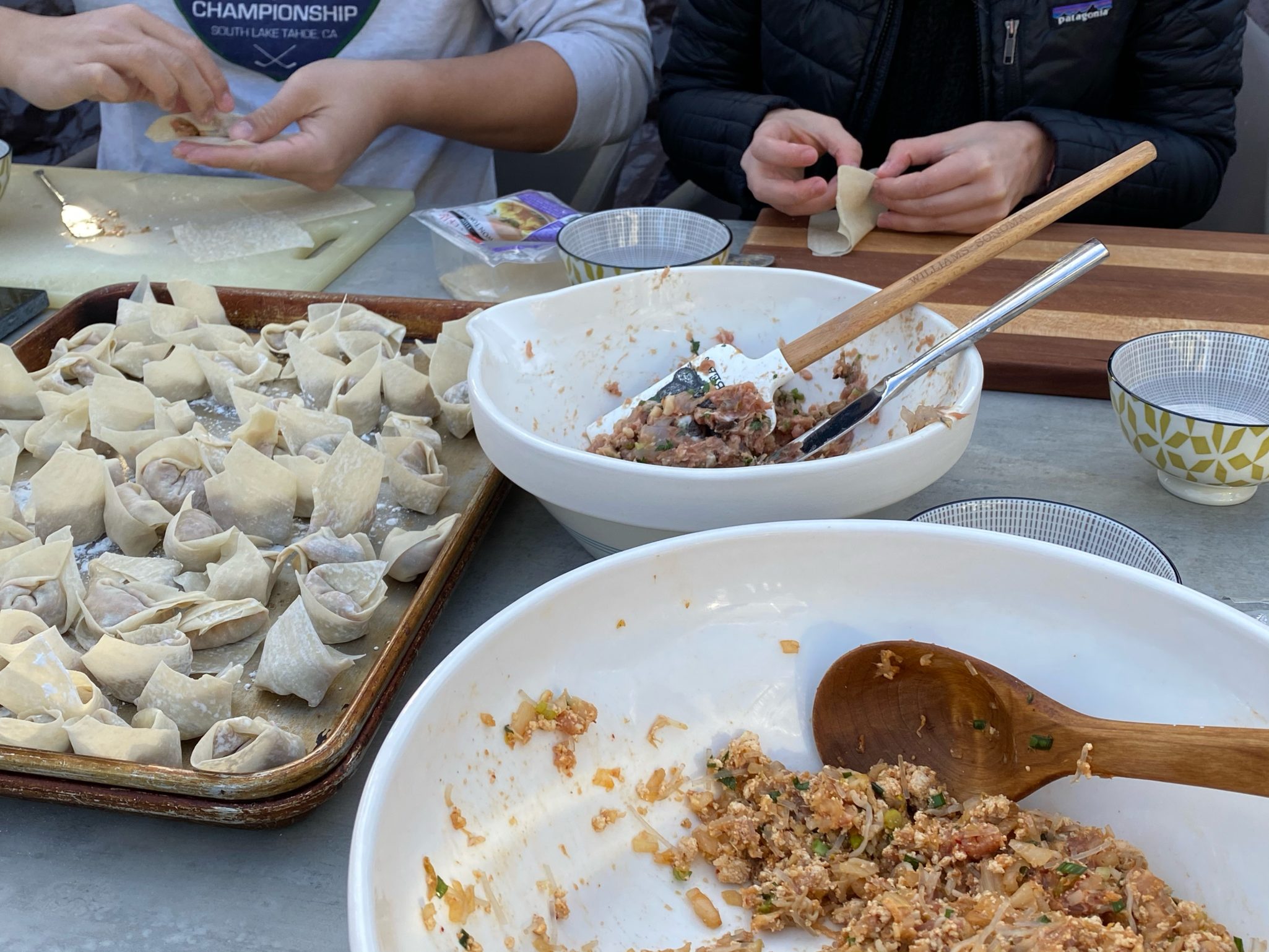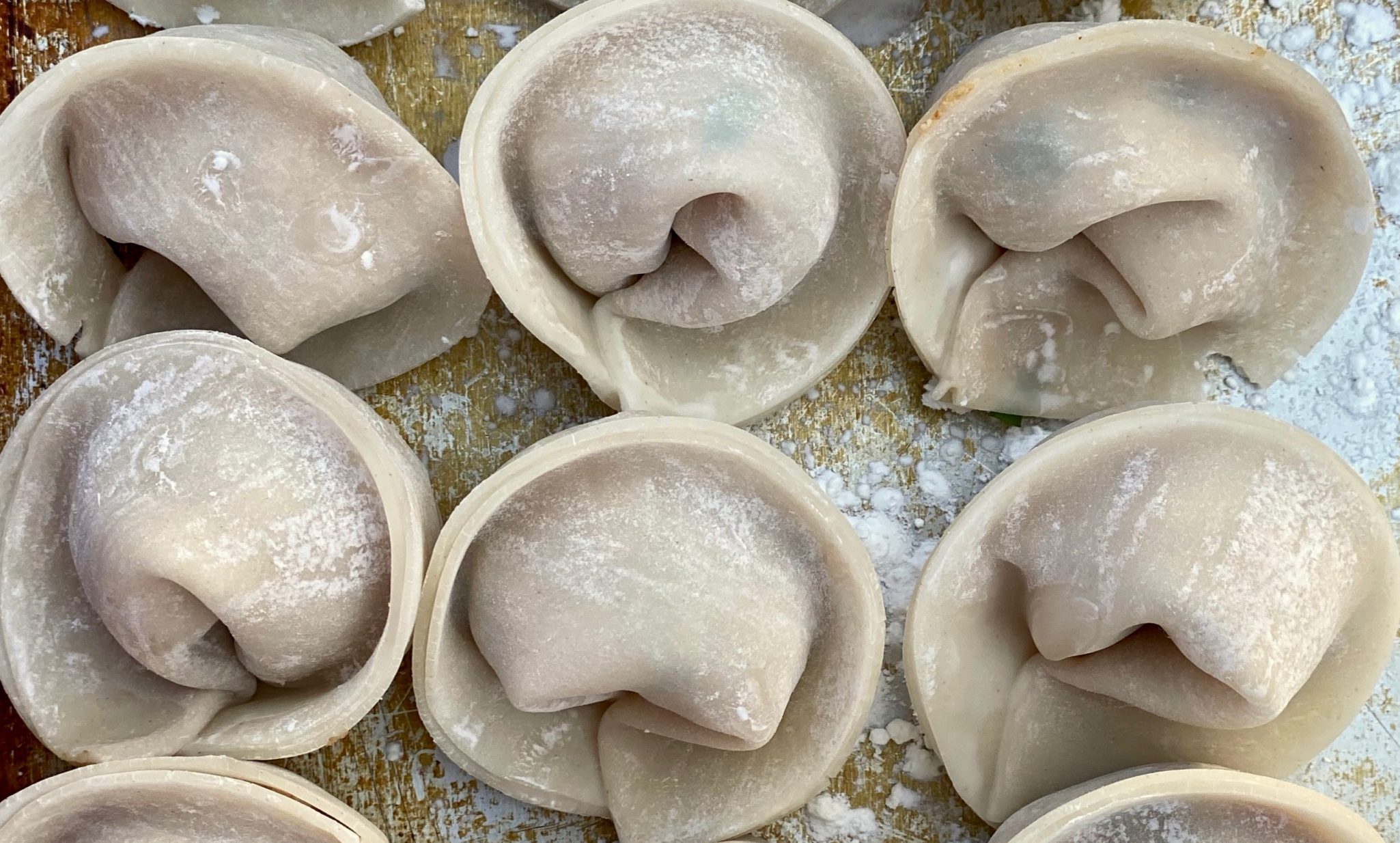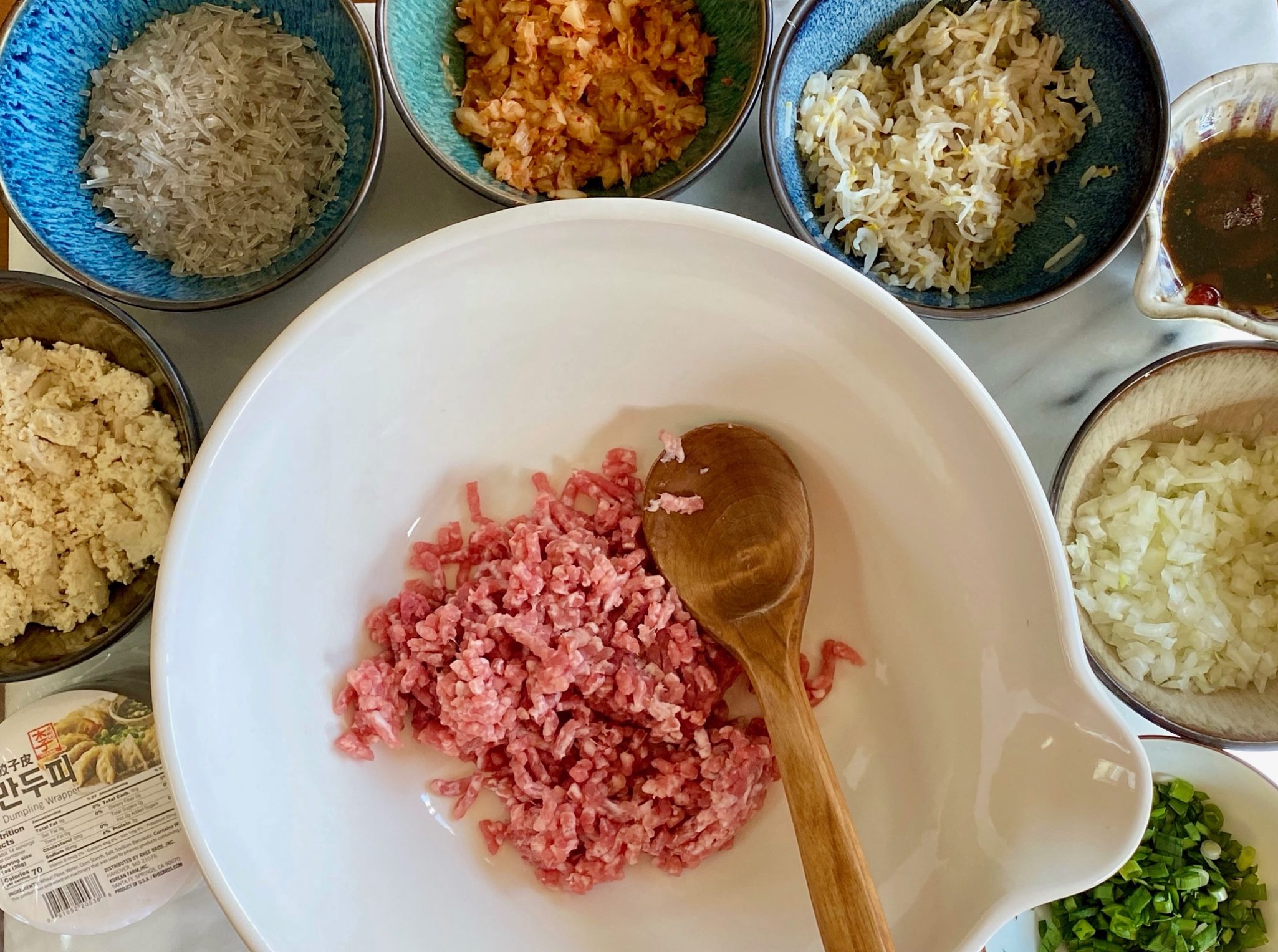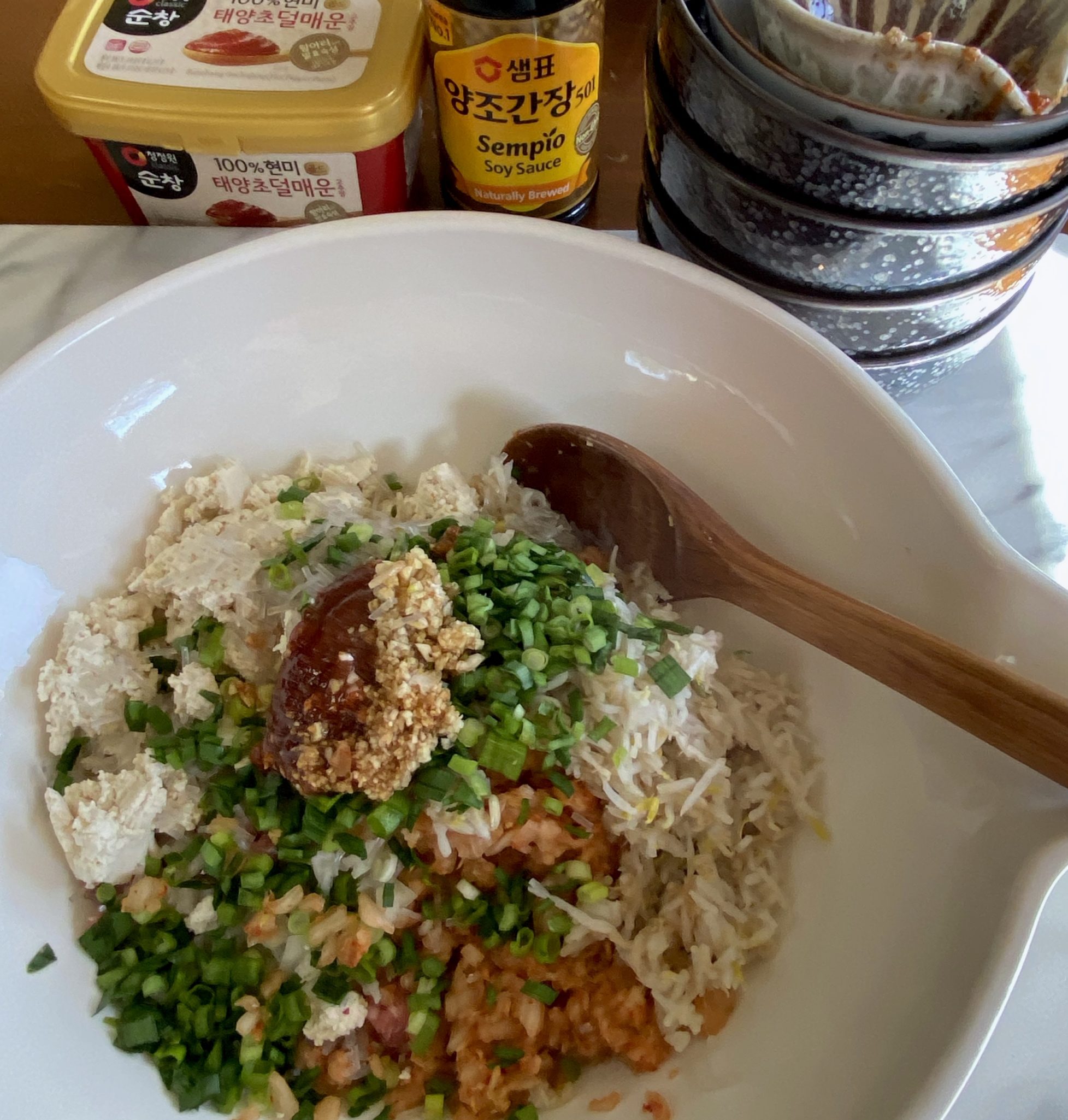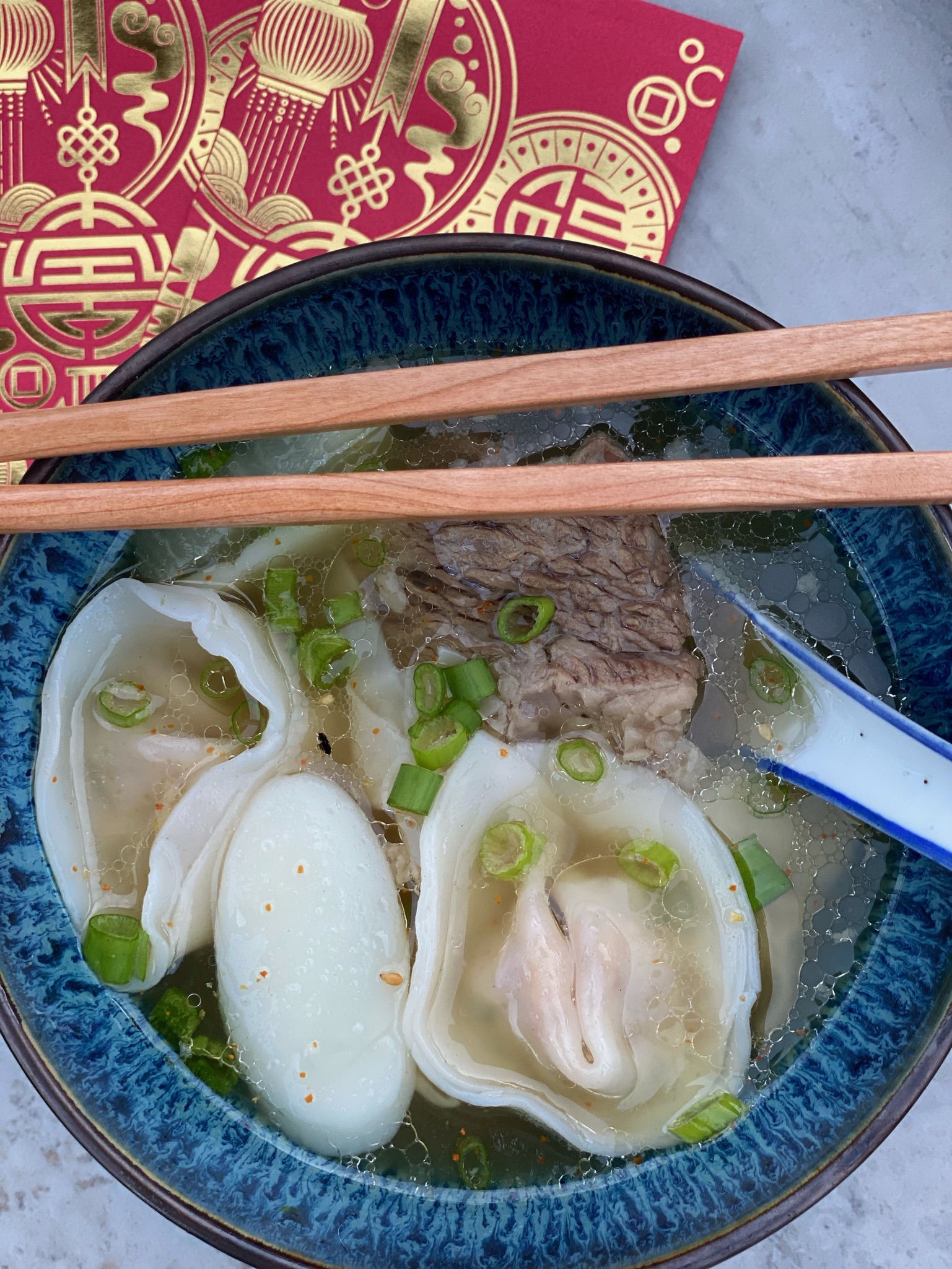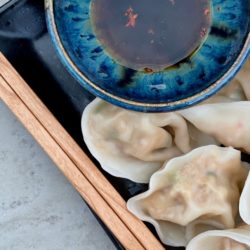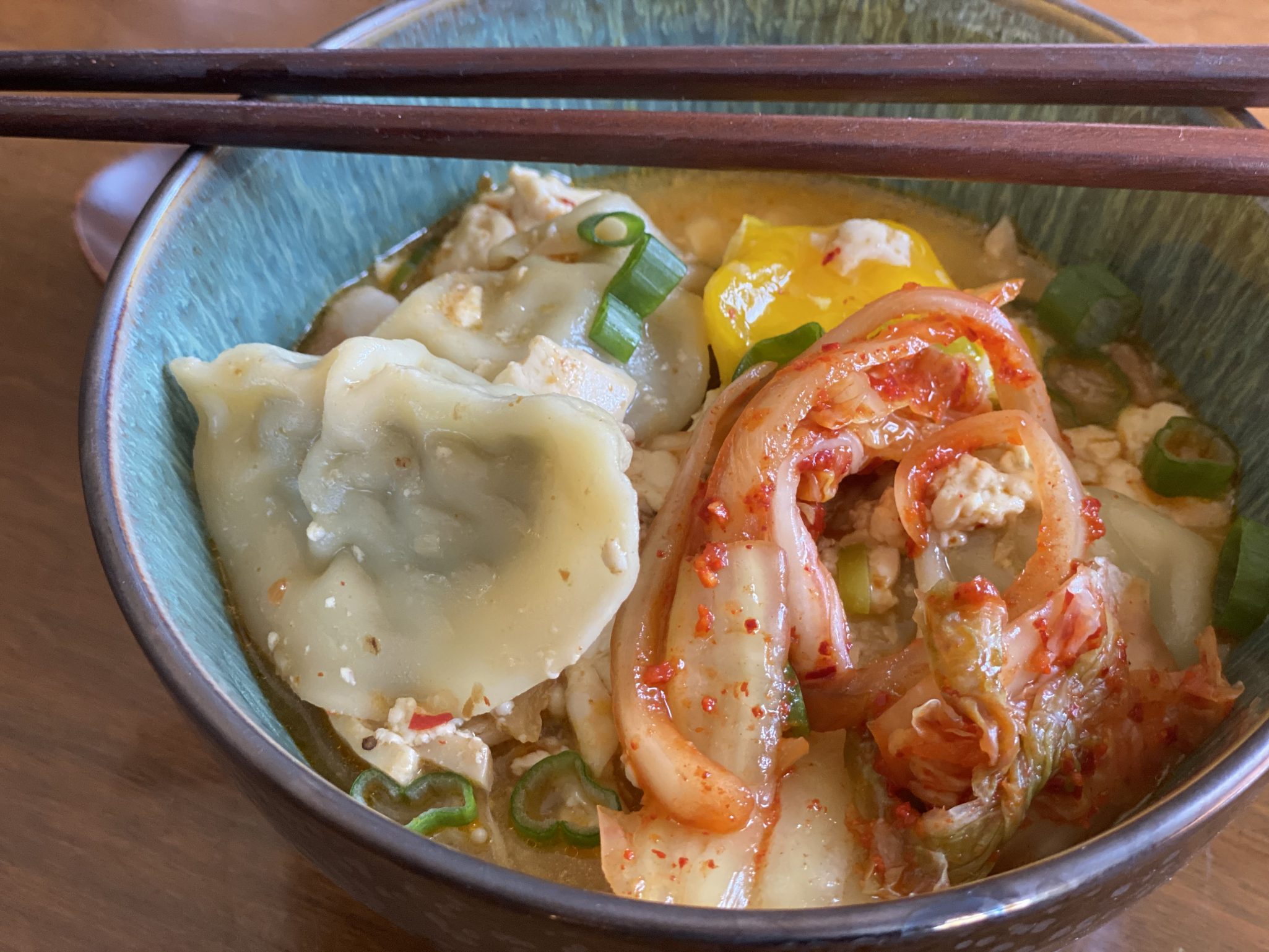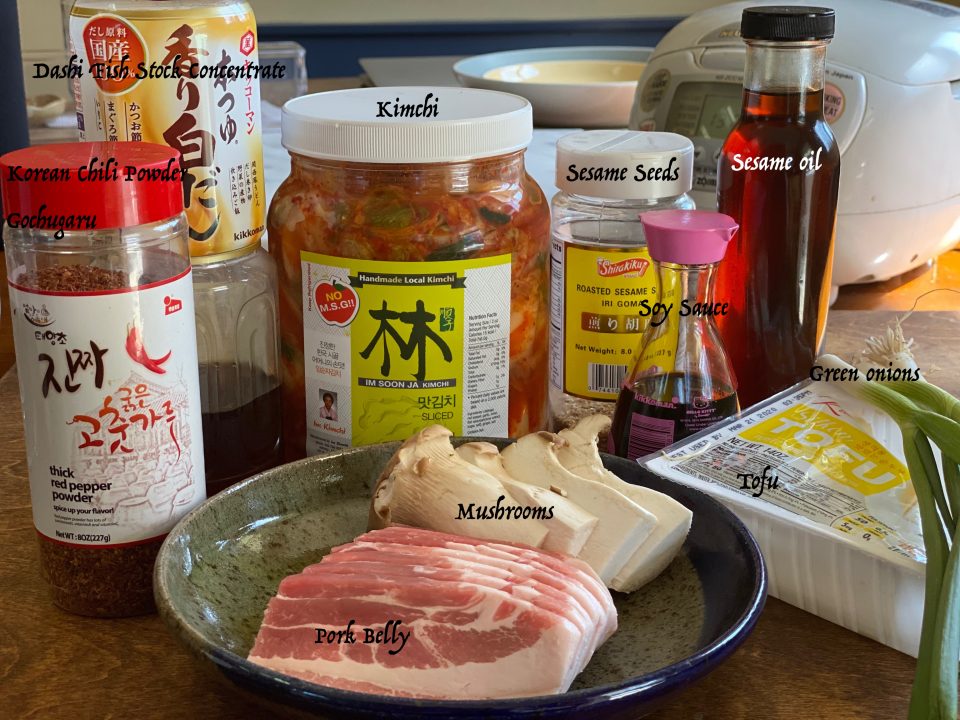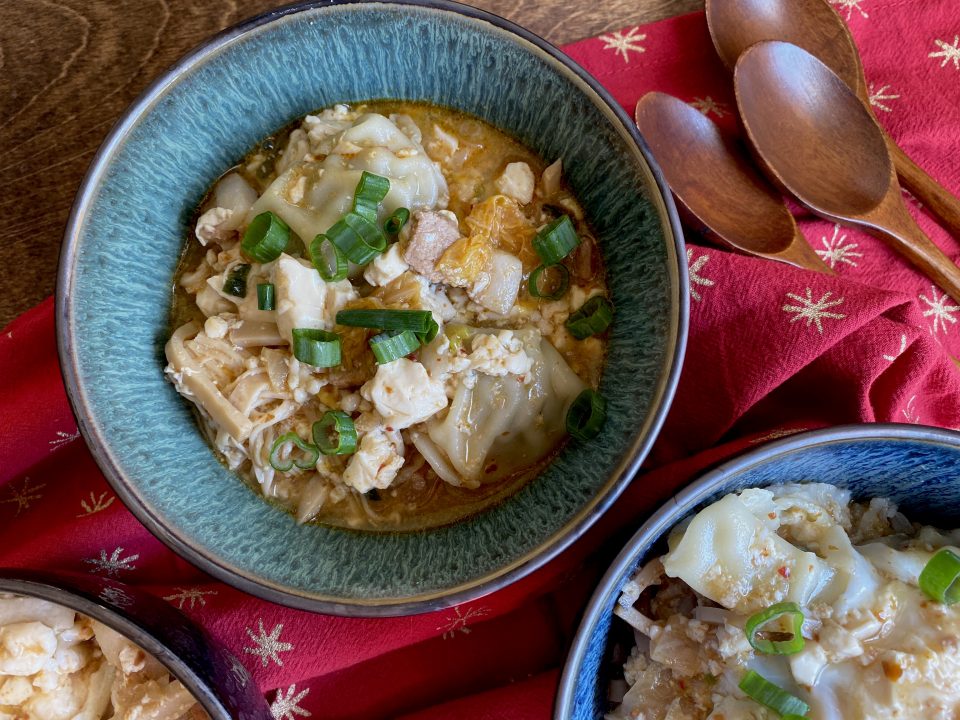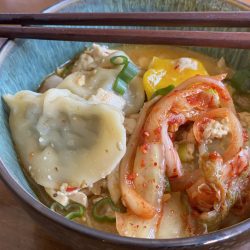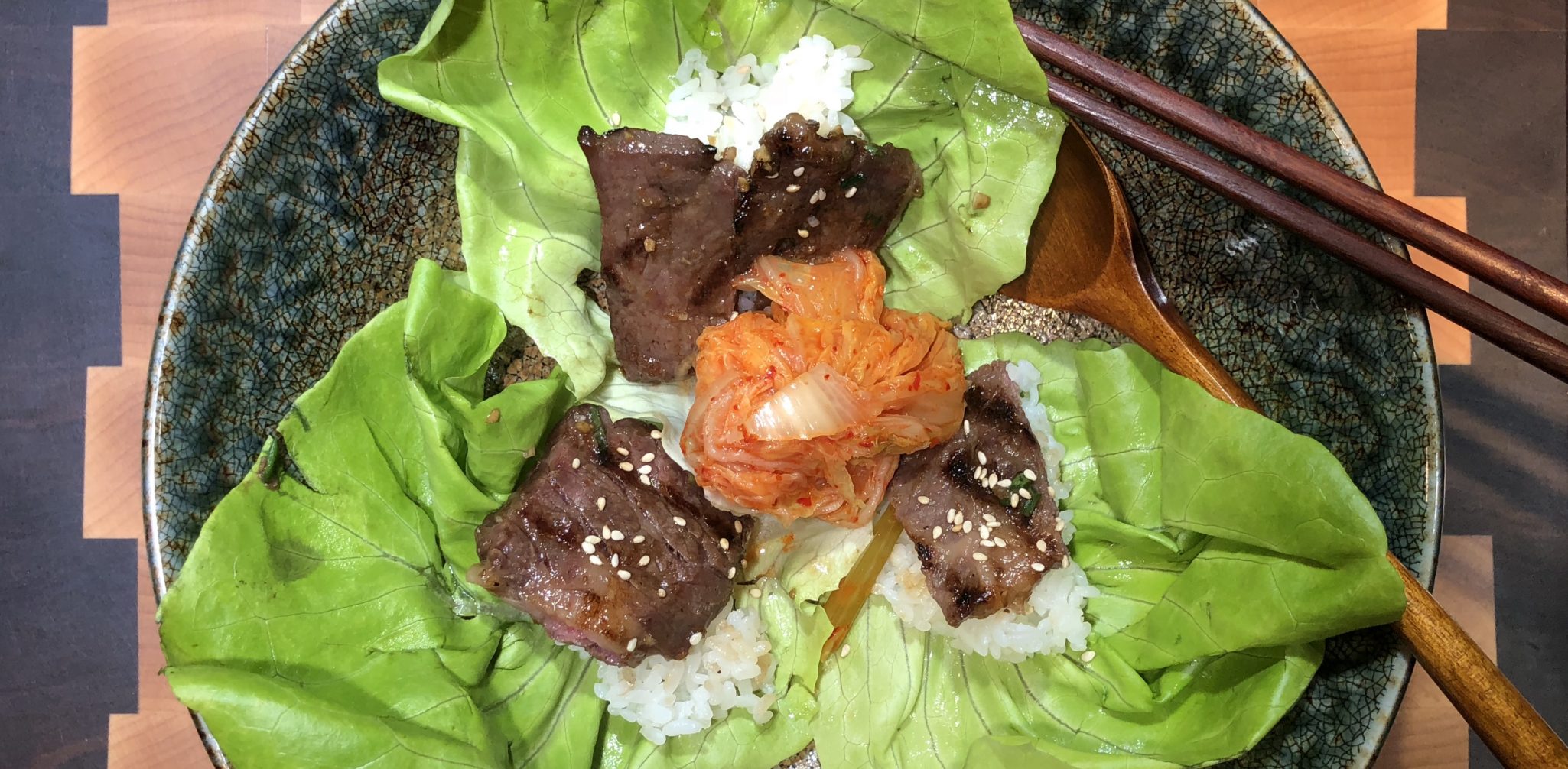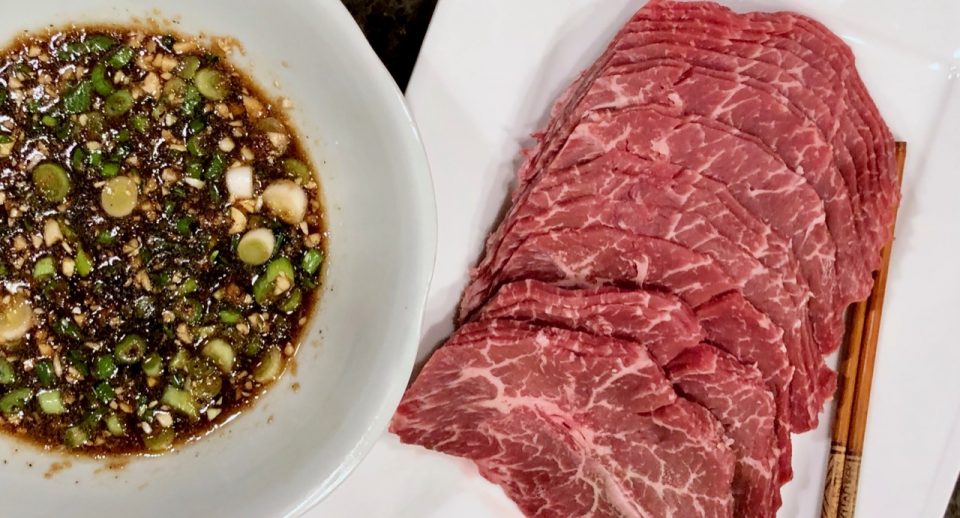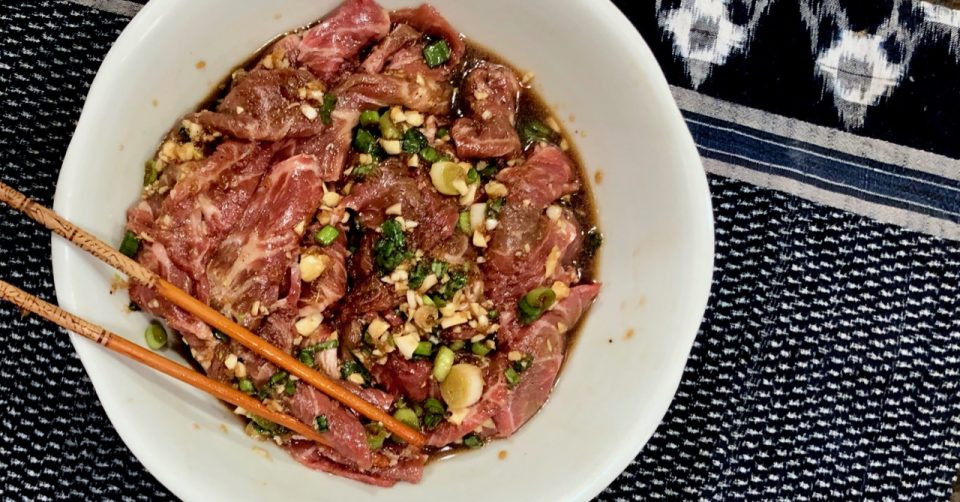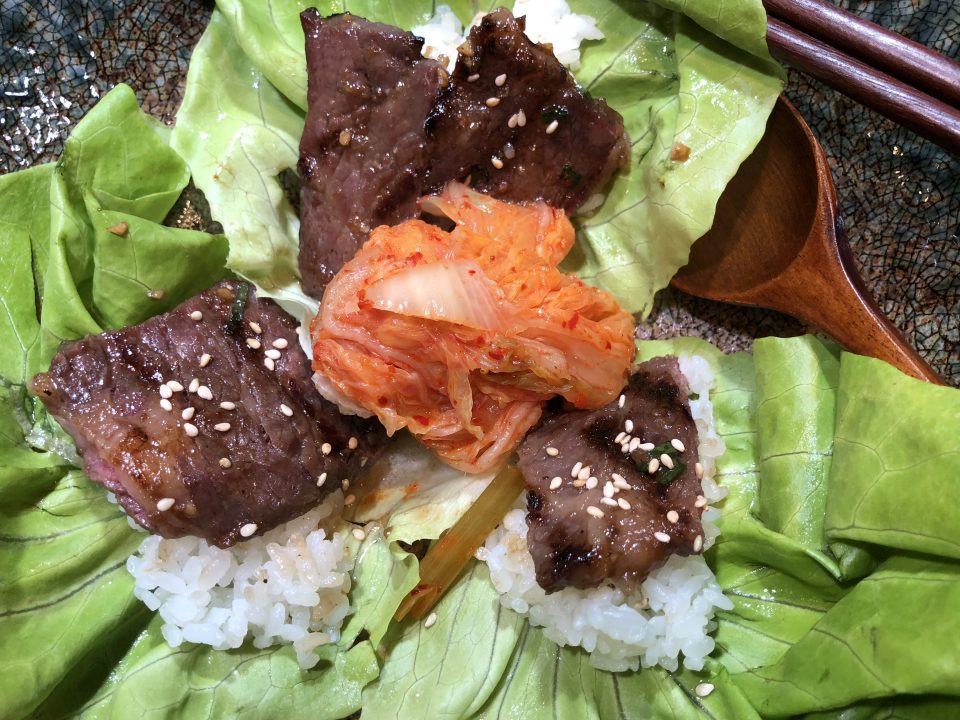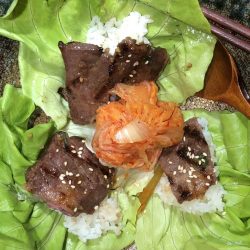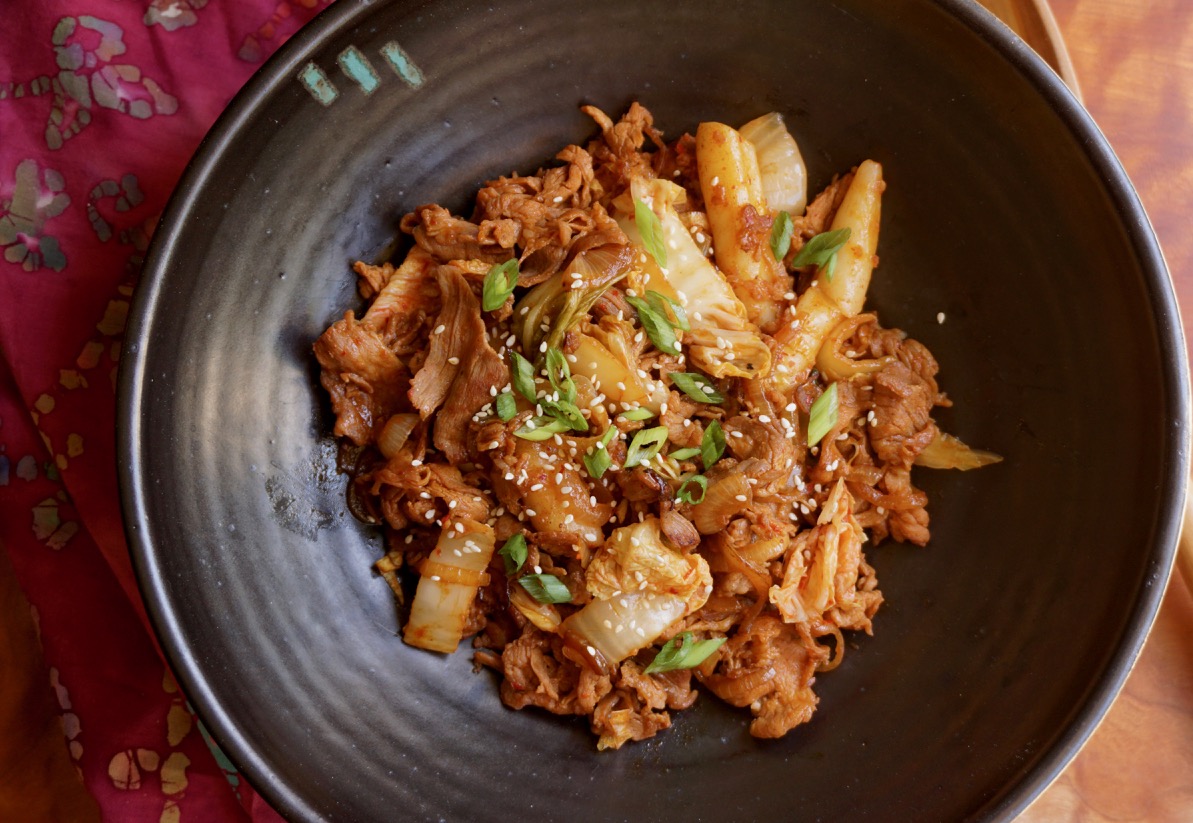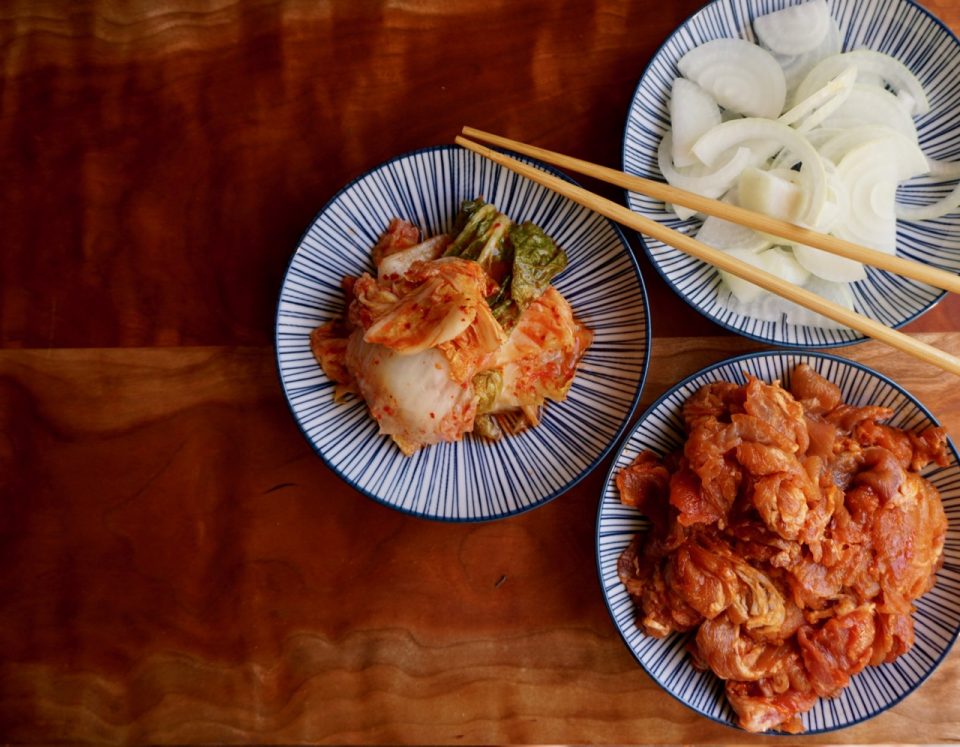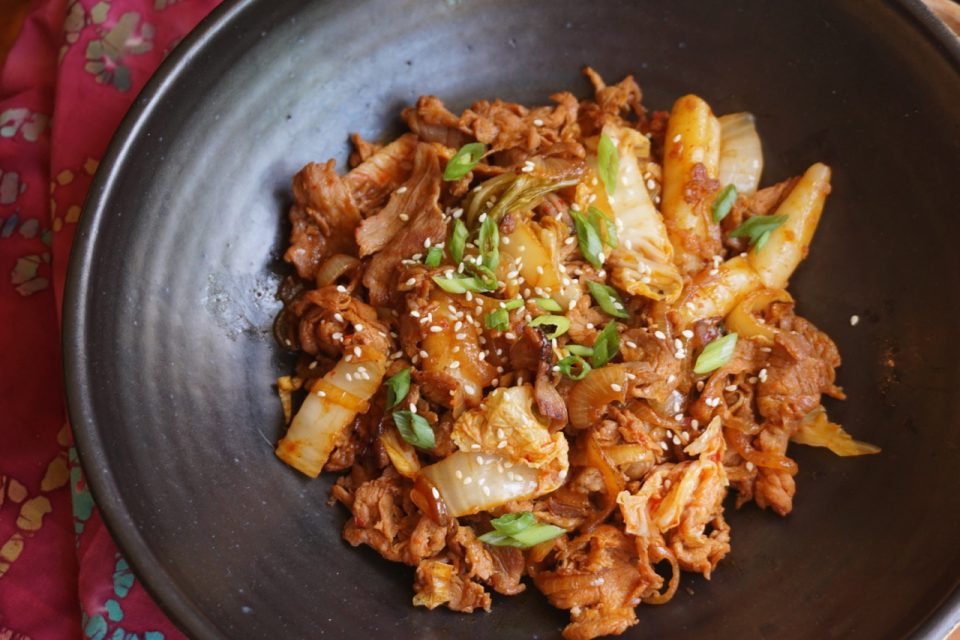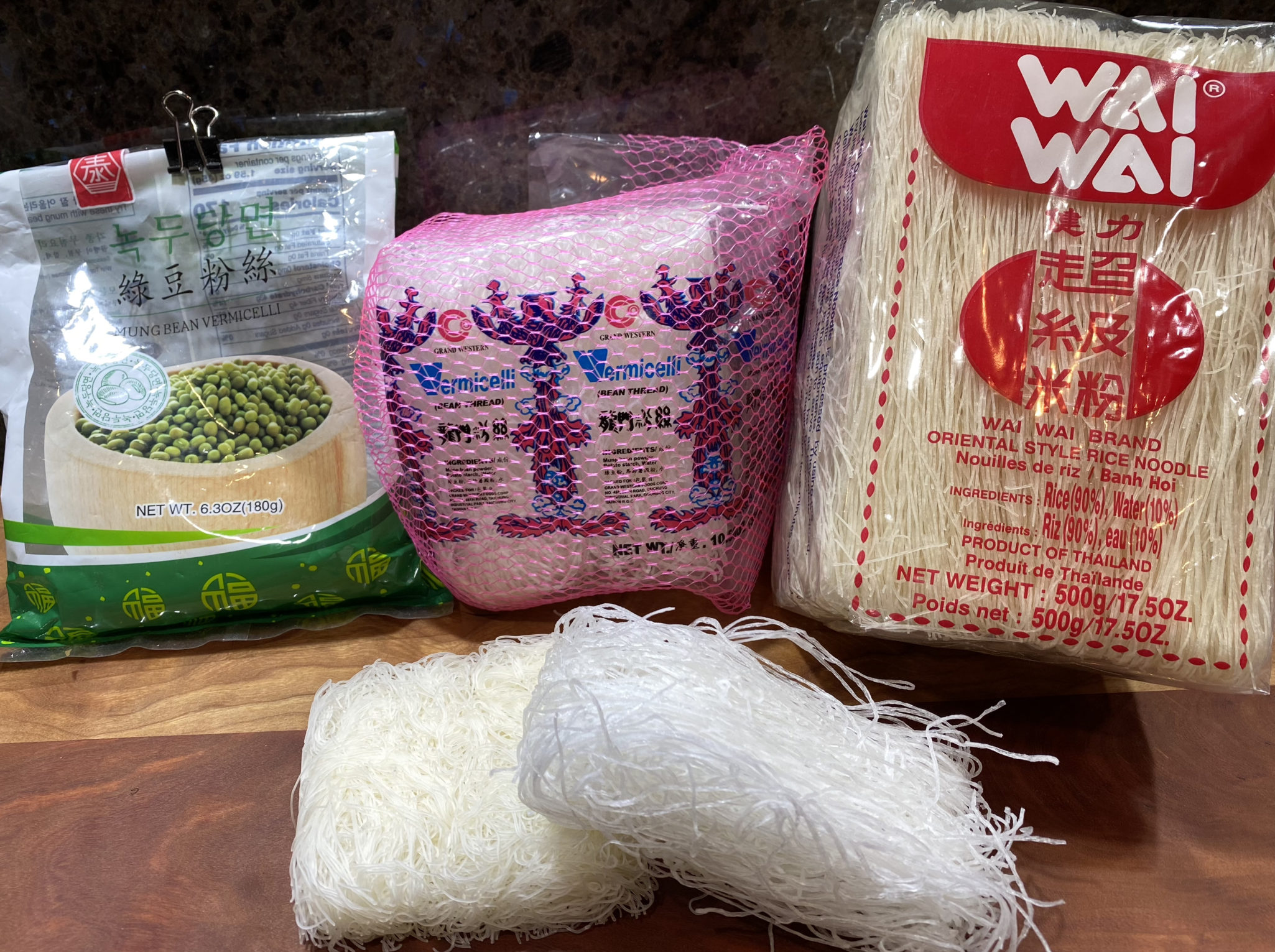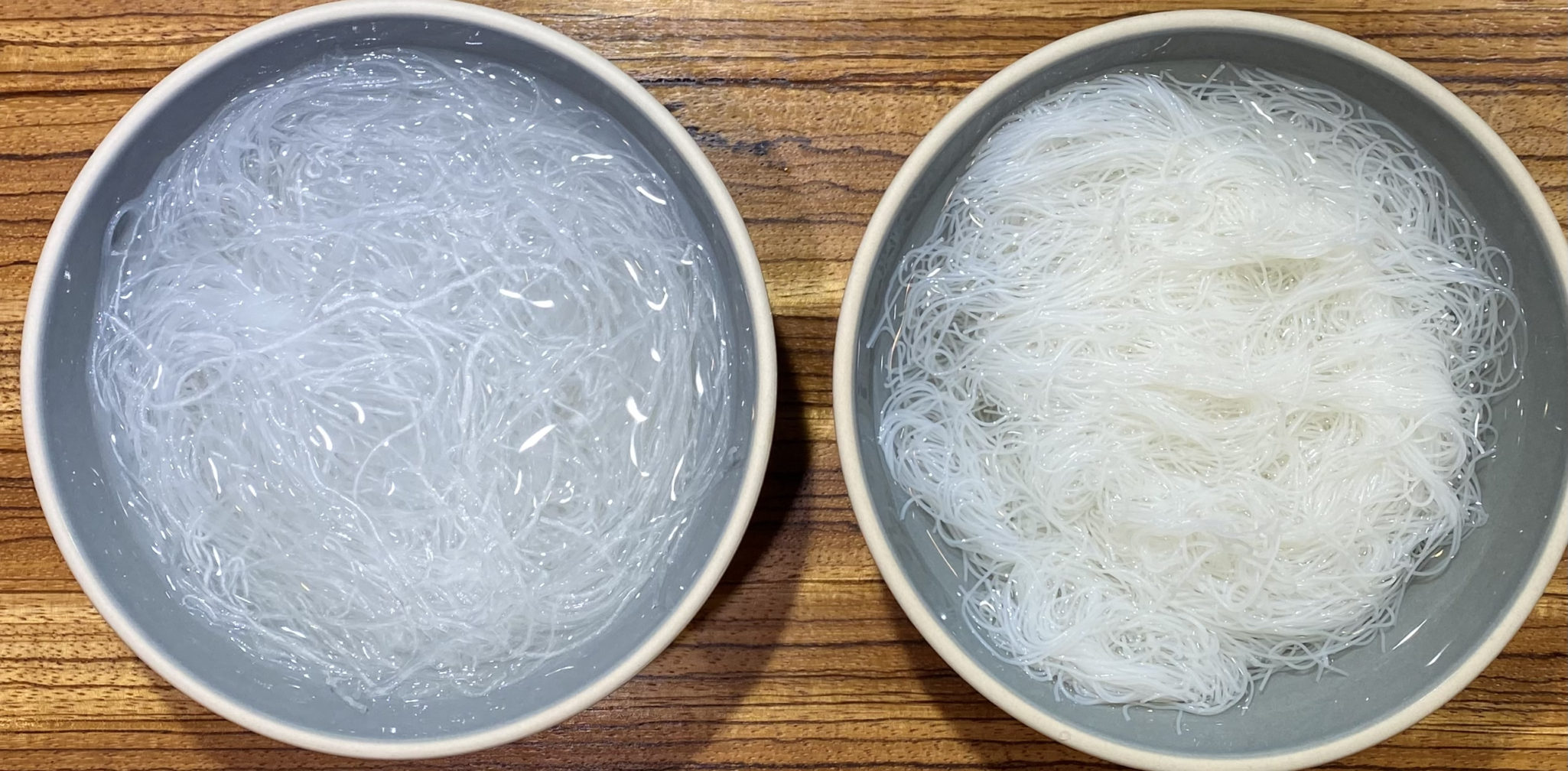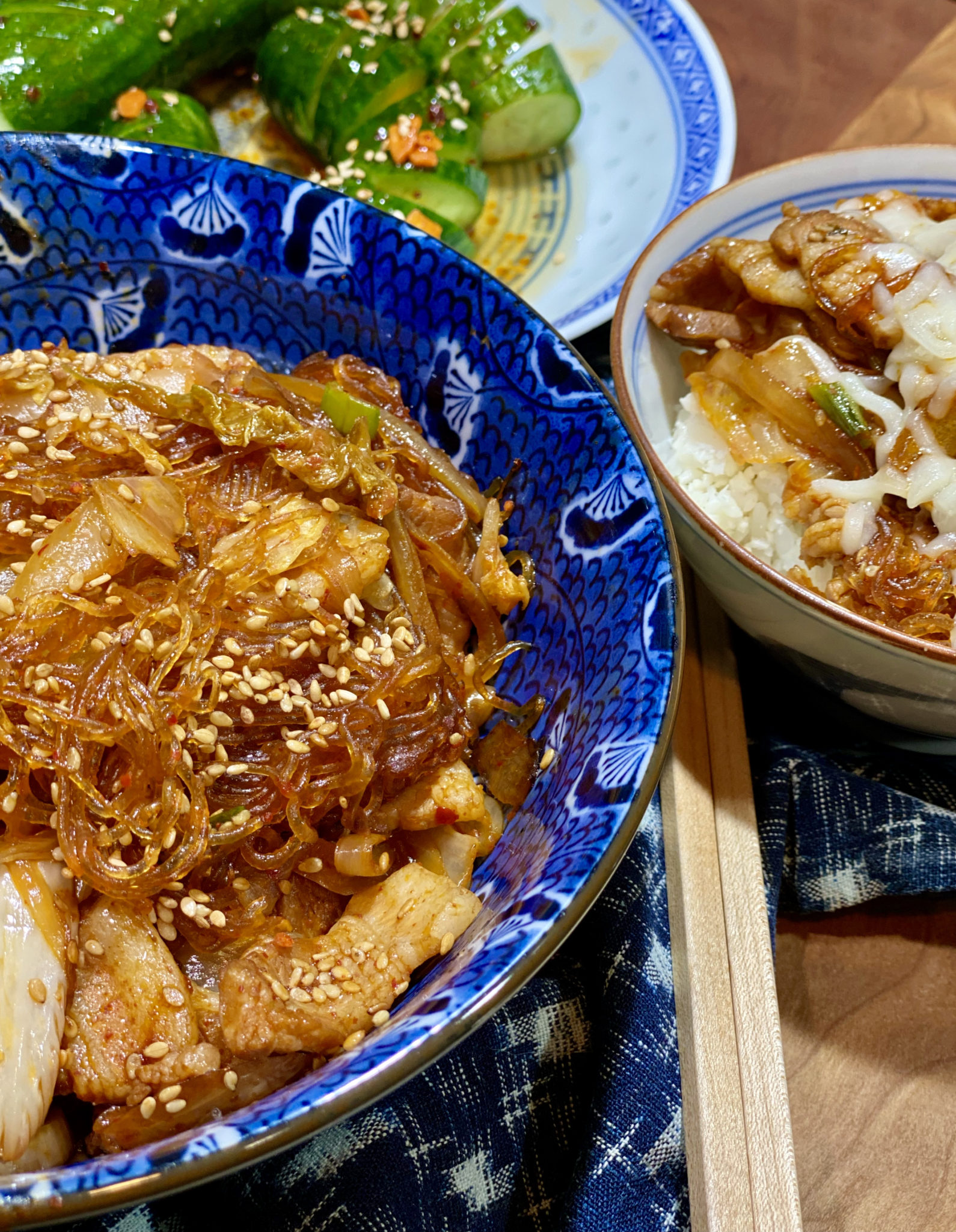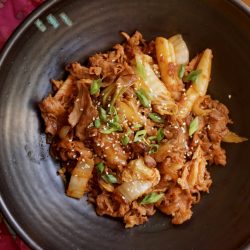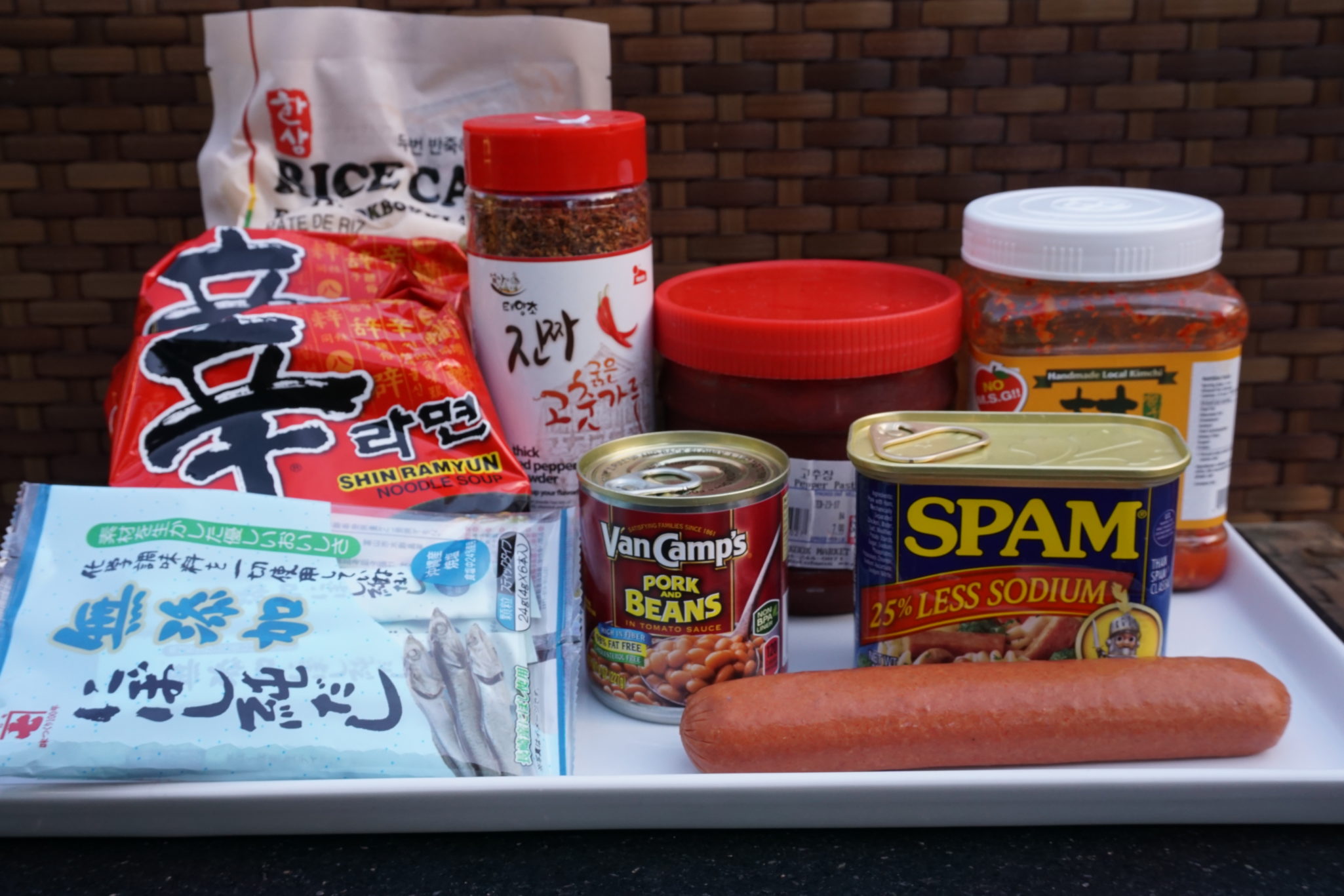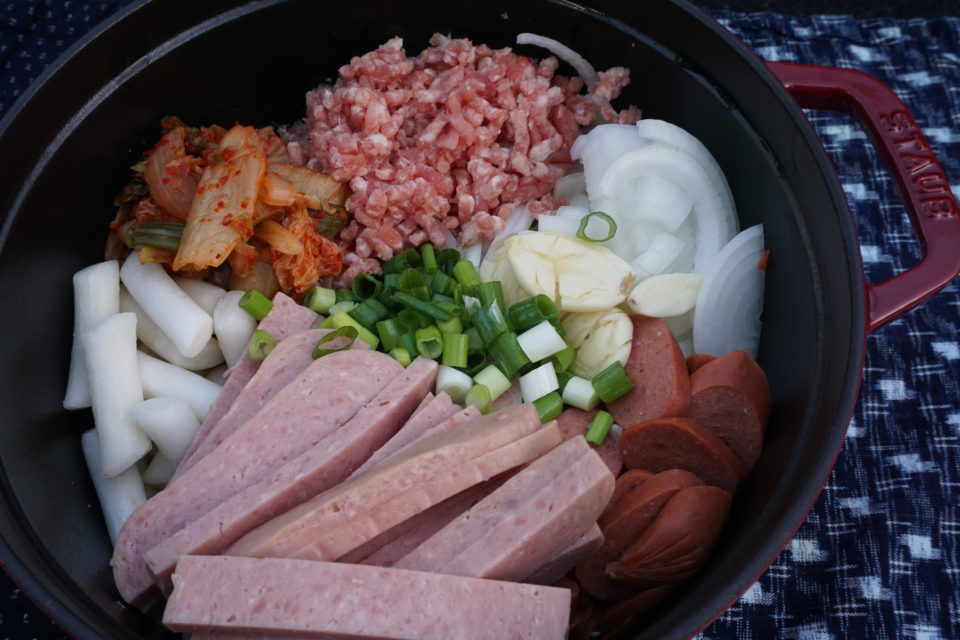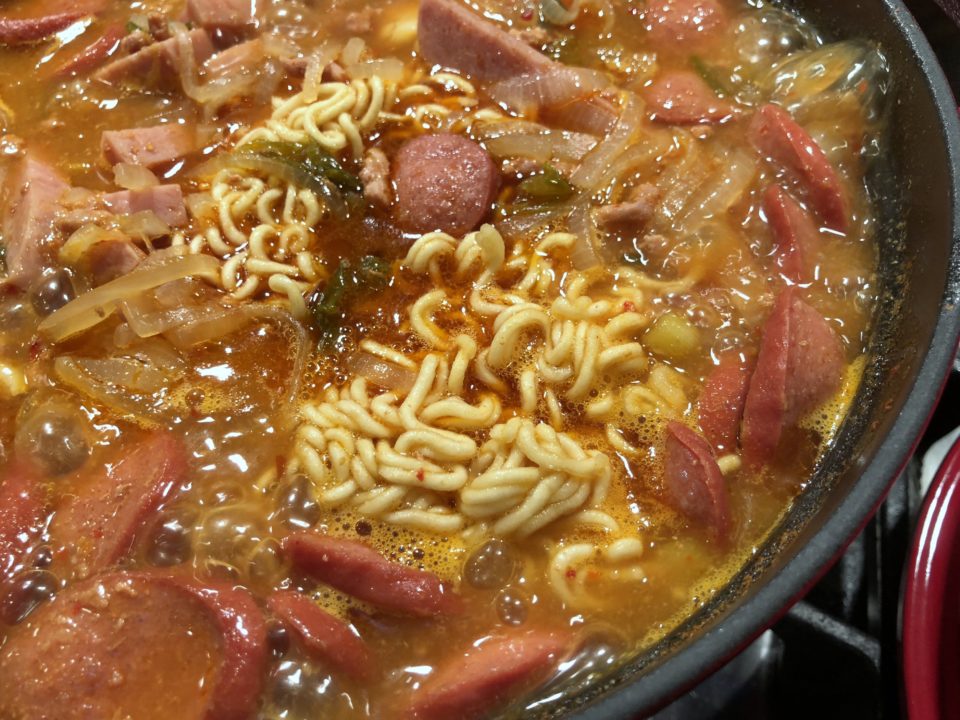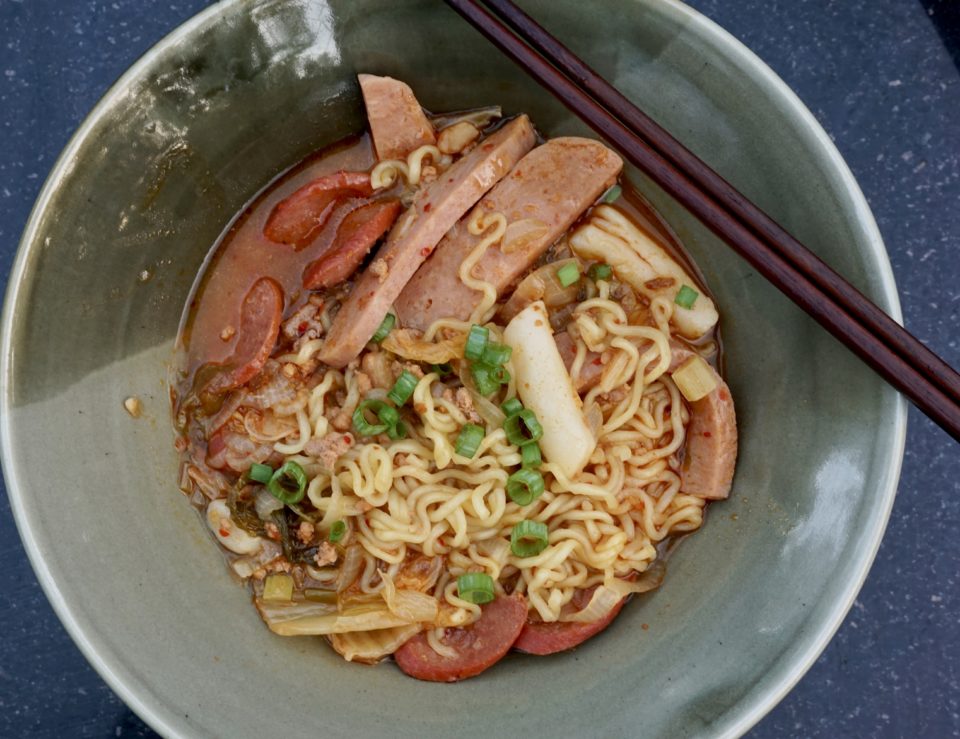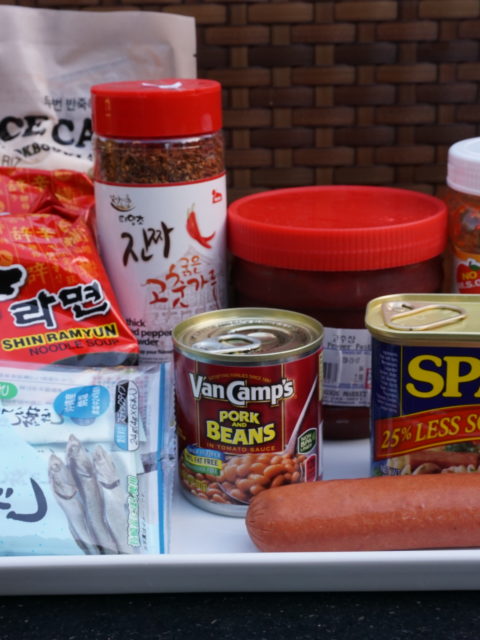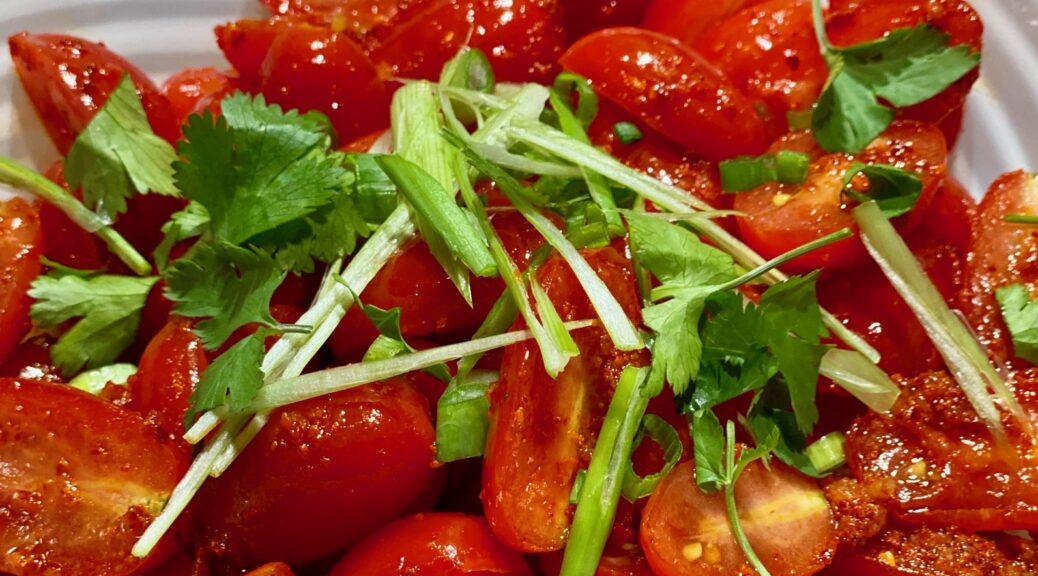
Eric Kim’s Grape Tomato “Quick Kimchi” (Rock-Paper-Scissors)
Every Sunday I meet up with friends for coffee then we walk to our local farmer’s market to stock up for the week. Every year, like clockwork, when summer is upon us, the following conversation takes place between us…
While Walking Back From the Market…
She who shall not be named Person #1 So, who is going to buy the Granny Cart? I can’t lug any more melons, corn, and peaches. We need wheels. I feel like a Sherpa and my shoulder hurts.
She who shall not be named Person #2 Aren’t you the one on Medicare already? You should get it.
She who shall not be named Person #3 But you’re the one with the watermelon, half flat of strawberries, and 6 ears of corn!
She who shall not be named Person #1 Wait a minute, you’re the one with grandkids, you get it.
She who shall not be named Person #2 I’m the youngest, I’m not getting it.
Needless to say, due to vanity, we are still schlepping our haul in multiple tote bags, occasionally stopping for a breather. This Sunday may have been the breaking point, none of us could resist, so much amazing fruit right now. We loaded up on berries, peaches (Biscuit Berry Peach Cobbler), cantaloupes, (Melon, Prosciutto & Mozzarella with Basil Oil), and watermelons, (Watermelon and Tomato Salad). Somebody has to bite the bullet and get that cart!
Tomatoes Are Coming…Update They’re Here!
And I bought my first baskets of cherry tomatoes of the season today. One of my favorite dishes, especially with the 90-degree weather we are having, is Eric Kim’s Grape Tomato Quick Kimchi. I’m staying away from the stove as much as possible and this dish fits the bill. It’s the perfect way to enjoy those lovely tomatoes.
Side Dish Today…Lunch Tomorrow
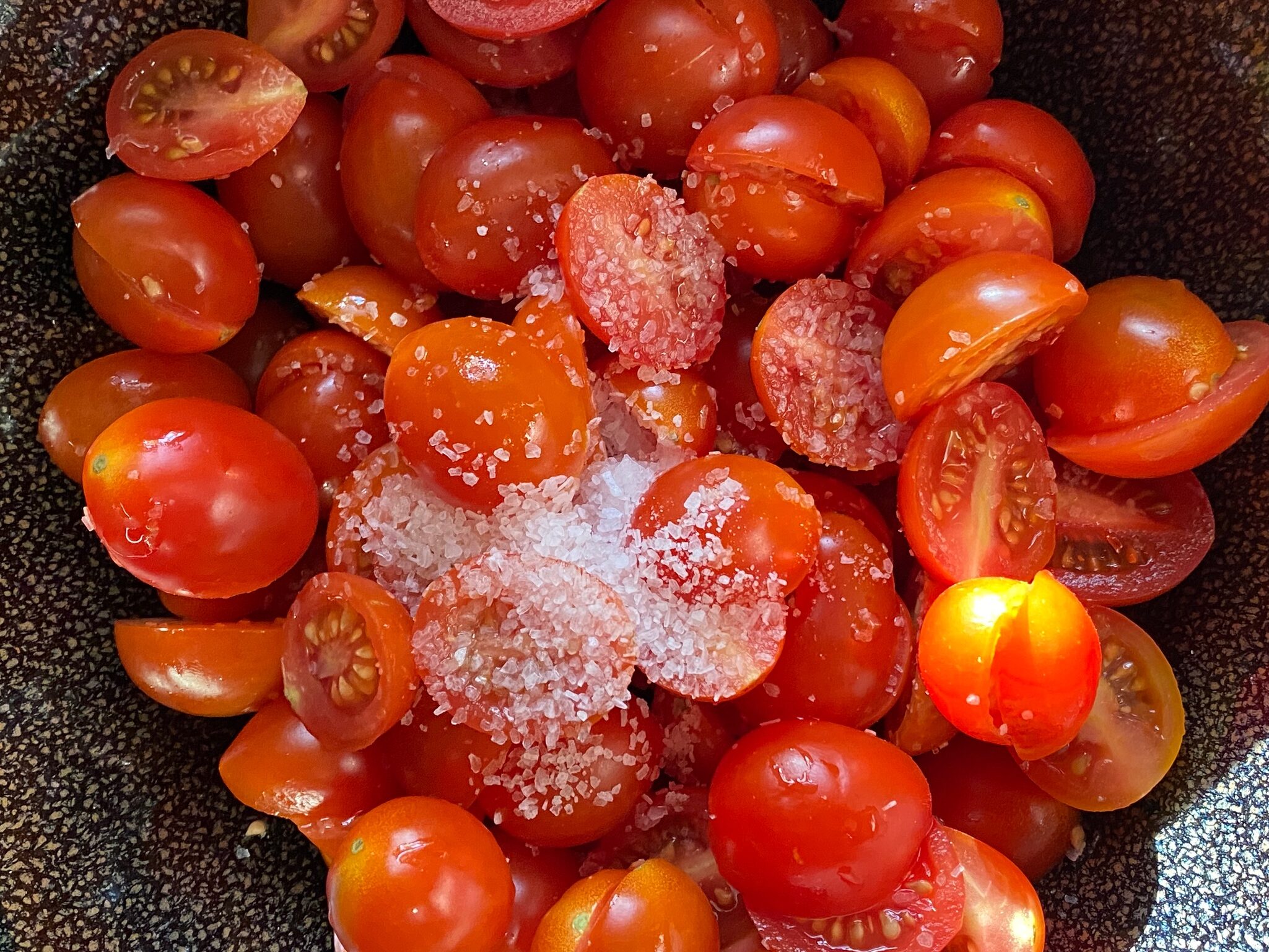
Simple to make, the time-consuming part is salting and allowing the tomatoes to drain. Use any variety of cherry tomatoes. The dressing consists of vinegar, fish sauce, sugar, and Gochugaru. Red Boat or Three Crabs, are good choices for fish sauce. Either can be found in any Asian store. Gochugaru is Korean chili powder that can also be found in most Asian stores. Your best bet would be a Korean market or online. If you can’t find it feel free to substitute with chili flakes (1/4 tsp or to taste) or Aleppo pepper powder (1:1). Toasted sesame oil provides a nutty, sweet finish to the dressing.
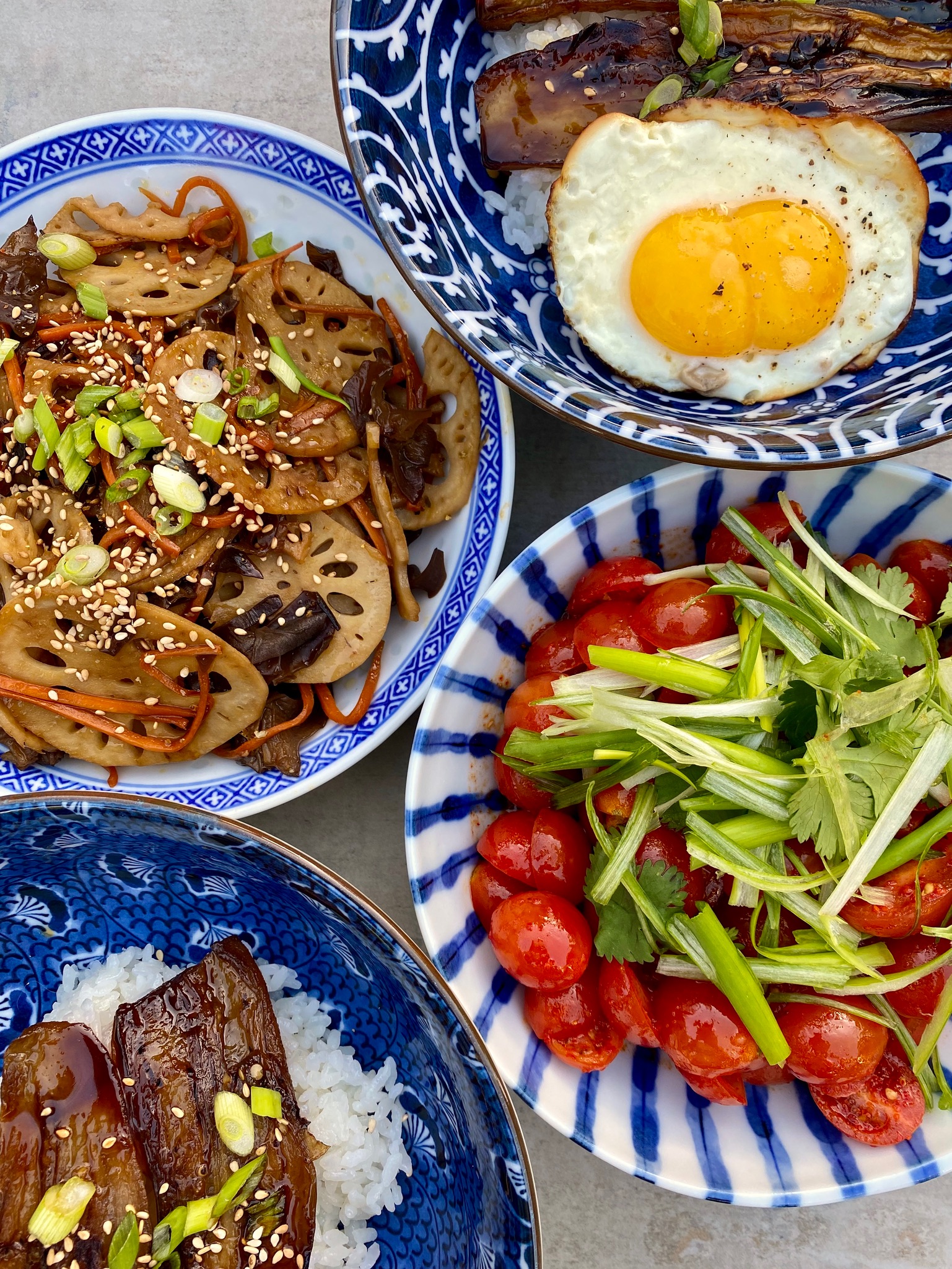
Serve it as a salad or side dish, like Banchan, it goes well with any kind of meal. I make a big batch so I have extra for an easy lunch the next day. Just cook up some pasta, either ramen noodles or Angel Hair pasta, and toss it with the leftover tomatoes and sauce. The pasta warms the tomatoes and picks up the flavors of the dressing, it’s delicious.
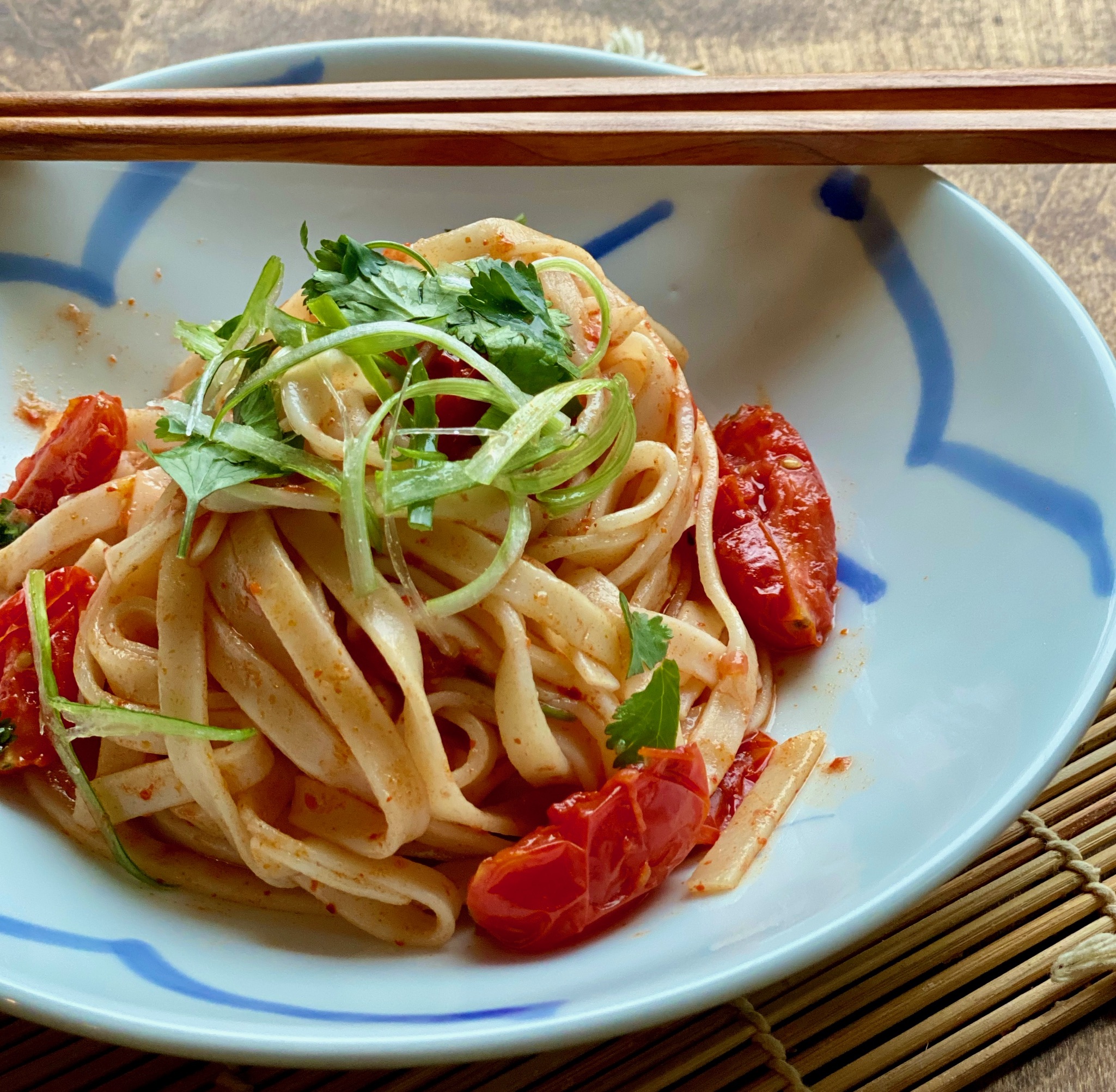
With tomatoes coming into season now and the weather warming up, this easy-to-make dish is perfect.
Grape Tomato ‘Quick Kimchi’
Ingredients
Tomatoes
- 1 pound grape tomatoes (or any ripe cherry tomato) about 2 to 3 cups, halved lengthwise
- 1 teaspoon kosher salt
Banchan Dressing
- 2 tablespoons white distilled vinegar substitute with rice vinegar
- ½ teaspoon finely grated garlic
- 1 tablespoon plus 1 teaspoon sesame oil Toasted sesame oil like Kadoya
- 1 tablespoon gochugaru powder of flakes
- 2 teaspoons fish sauce
- 1 teaspoon granulated sugar
Garnish
- Thinly sliced scallions chopped chives, or cilantro or flat-leaf parsley leaves for garnish (optional)
Instructions
- In a medium bowl, toss the tomatoes with the salt, transfer to a colander, and let drain about 30 minutes. In the same bowl, add vinegar and garlic and set aside.
- After 30 minutes, add the sesame oil, gochugaru, fish sauce and sugar to bowl with the vinegar and garlic and whisk to combine. Pat the tomatoes dry, then add the tomatoes to the dressing and toss until well coated.
- Garnish with the optional herbs before serving. This is best eaten right away, but can be refrigerated for up to 24 hours.
- Make this for banchan for dinner and use any remaining as a pasta sauce the next day. It is delicious with somen noodles. Cook as directed. Add tomatoes to hot noods and mix. Serve immediately.

